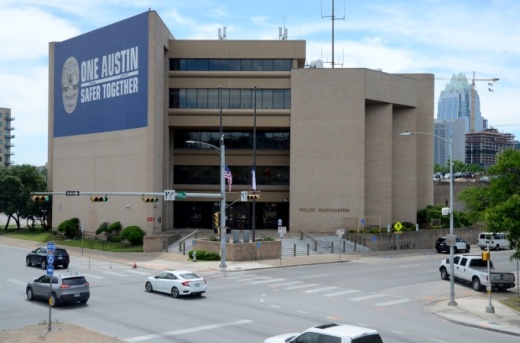The property at 715 E. Eighth St. sits just west of I-35 and brings in no property tax revenue for the city. It is located in proximity to the city’s burgeoning Innovation District and along the path of the Waterloo Greenway linear park project. Many in the city agree that the property should do more than host a decades-old structure that houses 375 full-time Austin Police Department staff.
During the city’s monthslong debate over the police budget and addressing systemic inequities heading into fiscal year 2020-21, City Council Member Jimmy Flannigan proposed the city jumpstart the conversations around the police headquarters, with a focus on creating a community asset, symbolic of the bridge the city was trying build between its ideals for the future and its long history of inequality. The proposal was supported unanimously.
However, Alex Gale, assistant director of the city’s real estate office, said the first task is to figure out the needs of the police department and where to relocate the police staff. Gale said that process could begin within the next six weeks but could also take a year once started. Up to this point, he said, not much legwork had been done on answering the relocation question.
The city’s public safety commission lightly kicked off an abstract discussion around what the property could become during its Sept.9 meeting. The commission brought in a panel of Austinites doing a range of work in the community, from a tenants’ rights activist and emergency medical technician to an entrepreneur aiming to bring opportunity to communities who have been traditionally left behind. The conversation was brief and the first of many, according to the group.
The group spoke about the potential of the site as a community and nonprofit space, a space where homelessness services could be stationed, or a mix between public and private in order to drive tax revenue. They also discussed the possibility of amending the capitol view corridor rules, which dwarfs construction so the Texas Capitol can be seen from various parts of town.
“I really do not see this as part of the defund APD conversation,” said Conor Kenny, a former planning commissioner turned public affairs director for local civil engineering and planning outfit Civilitude. “This [property] is literally a bridge to East Austin. It’s a happy coincidence that this site needs to be redeveloped at a time when we’re talking about reimagining public safety and justice.”
Gale said the city is a long way out from any answers for the property but said whatever it becomes will likely have to drive some property tax revenue. He said the city is relying on the property to pay into the Waller Creek tax increment finance zone to help pay for the Waterloo Greenway project.





